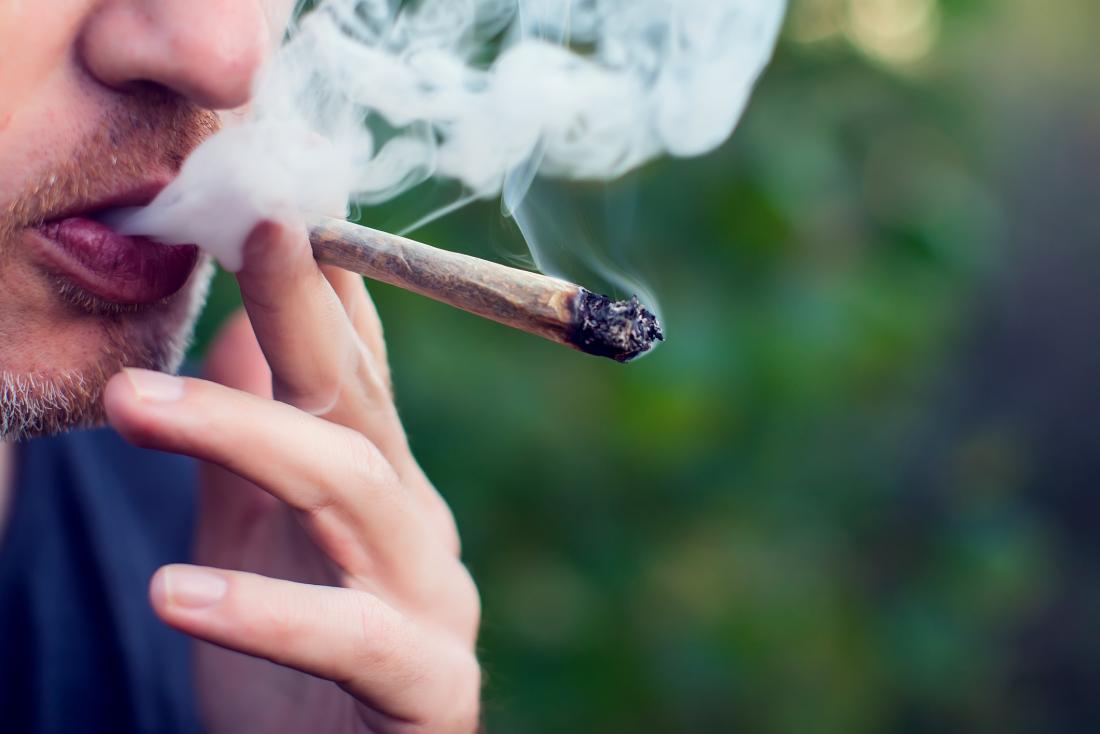
Frequent users of cannabis may have ‘disabling’ withdrawal symptoms, researchers warn.
A recent study — led by the Columbia University Mailman School of Public Health and Columbia University Irving Medical Center, both in New York City, NY — set out to investigate what percentage of people who frequently use cannabis may experience cannabis withdrawal syndrome.
This condition is included in the latest edition of the Diagnostic and Statistical Manual of Mental Disorders (DSM-5), which was published in 2013.
According to the DSM-5, a formerly frequent user of the drug has cannabis withdrawal syndrome when they experience at least three of the following symptoms within a week from cessation:
- irritability or hostility
- nervousness or anxiety
- poor sleep
- loss of appetite
- restlessness
- feelings of depression
- shakiness or tremors
- sweating
- fever
- headaches
“In a rapidly changing landscape of marijuana laws and attitudes,” notes study author Prof. Deborah Hasin, “cannabis use continues to increase among American adults.”
“As a result,” she adds, “more information on the prevalence and correlates of clinical withdrawal in the general population is of critical importance.”
Withdrawal linked with psychiatric disorders
The researchers started from interviews with 36,309 participants who registered for the 2012–2013 National Epidemiologic Survey on Alcohol and Related Conditions-III, a national survey that takes into consideration clinically diagnosed cannabis withdrawal syndrome.
For the study analysis, the investigators used data collected from 1,527 participants who identified as frequent cannabis users. This means that they used cannabis at least three times per week for 12 months before they took part in the interview.
In their study paper, which appears in the journal Drug and Alcohol Dependence, the researchers report that, according to their analysis, 12 percent of people who frequently smoke marijuana experience cannabis withdrawal syndrome.
The researchers also note that cannabis withdrawal symptoms appeared to be linked with mental disability and a family history of depression.
Also, these symptoms were associated with a number of psychiatric disorders, including mood disorders, anxiety disorders (social phobia, agoraphobia, and panic disorder), personality disorders, and post-traumatic stress disorder.
Of all the possible withdrawal symptoms, most frequently, the participants reported experiencing nervousness or anxiety (76 percent of the respondents), hostility (72 percent), sleep problems (68 percent), and depressed mood (59 percent of the respondents).
Fewer participants reported having physical symptoms of cannabis withdrawal. In cases wherein physical symptoms did appear, the most commonly encountered were headaches, tremors, and sweating.
The researchers came up with a “profile” of the person who uses cannabis frequently. Typically, they are male (66 percent of the participants), white (59 percent), young adults ages 18–29 (50 percent of the participants), college-educated (49 percent), never married (54 percent), and residing in a low-income household (45 percent).
A potentially dangerous outcome
Cannabis withdrawal syndrome was not significantly associated with how often the volunteers used cannabis over the course of a week, but the investigators found that it was significantly associated with how many joints somebody smoked per day.
A family history of drug or alcohol misuse did not appear to be linked with a person’s likelihood of developing withdrawal symptoms. A family history of depression, however, was linked with cannabis withdrawal syndrome.
“Cannabis withdrawal syndrome is a highly disabling condition.”
Prof. Deborah Hasin
She goes on to explain, “The syndrome’s shared symptoms with depressive and anxiety disorders call for clinician awareness of cannabis withdrawal symptoms and the factors associated with it to promote more effective treatment among frequent cannabis users.”
She is also particularly worried by the fact that new ways of using cannabis, such as in electronic cigarettes, may mean that users are not fully aware of just how much they are actually ingesting.
“Most users of the newer modes of administration — vaping and edibles — also smoke cannabis,” Prof. Hasin notes. “Therefore, for users in modes other than smoking, the amount of consumption could be underestimated,” she warns.
For this reason, Prof. Hasin suggests that specialists should aim to come up with a solid strategy that will allow them to better judge the impact of cannabis on an individual, depending on the concentration at which it is consumed.
“Given the increase in cannabis potency in recent decades,” she continues, “developing reliable measures to investigate the effect of cannabis concentration and mode of administration will be important in advancing our understanding of cannabis withdrawal syndrome.”
